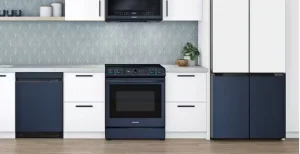Painting Techniques to Create Texture and Interest on Your Walls

Paint can do more than change the hue of your walls; it can add texture and interest to any room. With modern decorative painting techniques that are both simple and advanced, there’s no end to what textured effects you can create on walls with paint.
From stencilling to ragging, these distinctive painting techniques allow you to bring character and charm into your living spaces.
Stenciling
Stenciling is an effective and simple painting technique which uses cut images to block ink or paint on furniture or walls, producing unique designs and textures with just one step.
Select and utilize an appropriate stencil. Any minor movements of your hand or under spray could thwart your efforts and render them useless.
To avoid this from occurring, be sure to use a light touch with your brush and apply paint using tapping or stippling motion instead of back and forth movements when covering a stencil with color. Furthermore, be sure to mask off any areas which do not need coloring with this color in order to keep things looking tidy and professional.
Sponging
Sponging is one of the simpler decorative painting techniques to master. It involves applying a wash or glaze coat over an existing base coat with a damp sponge dipped into paint for an uneven effect, creating mottled effects with each stroke. Sponge painting can also be combined with other textures like stippling for even greater effects.
Wall texture can be an effective way to hide imperfections, create rustic aesthetics or simply add interest in any room. Applying texture can be as straightforward as spraying in a can or using drywall compound with paint roller. Popular textures include popcorn texture, knockdown texture and orange peel texture which each have their own distinct look and feel; popcorn and knockdown textures have more prominent peaks which help conceal major wall flaws better than others.
Texture Painting
With some patience and creativity, you can learn to add unique textures to your paintings using common household items such as chopsticks and straws – even crumpled paper can be pressed into wet paint to form unique patterns!
Textured paints offer another dimension to your walls, creating the appearance of a brushed or stippled look, or give them a combed effect (great choice for bedrooms). Look out for rollers with differing densities for this purpose, or brushes with different types of teeth to give a unique comb-over look (perfect for bedrooms).
For bolder textures, try techniques like scumbling or sponge rolling – both techniques add depth to neutral colors or monochromatic looks.
Colour Blocking
Colour blocking, an increasingly popular design trend, involves painting sections of your home in contrasting or complementary hues to create a striking visual contrast. This effect can be created on any surface from accent walls to ceilings – with any combination of hues or patterns yielding subtle or dramatic results depending on which hues or patterns are selected.
Color blocking requires selecting an aesthetic and balanced scheme, using the color wheel to identify complementary and analogous hues – those opposite each other provide high contrast, while analogous ones sit side-by-side to create harmony.
Block painting can also be an excellent way to emphasize certain features in your home, like moldings and trim, by applying two tones – darker at the base and lighter on top – in an ombre pattern to mimic wainscoting.
Crackle Effects
Crackle effect painting is an easy faux finishing technique that gives your walls and furniture pieces an antique, distressed appearance. All it requires are acrylic, oil or thick paints as well as crackling medium or glue (Elmers white works perfectly) to achieve this unique finish.
Prepare your surface by sanding and priming as necessary, allowing the primer to dry before applying a base color. After painting has dried completely, use a brush to apply crackle medium or glue and cause the top coat of paint to crack to reveal another shade – it is best to select one that contrasts with your base coat color for maximum effect.
Textured paints can add visual interest and movement to any space, giving the space a vibrant vibe. Experiment with various techniques from above until you find one you like!






